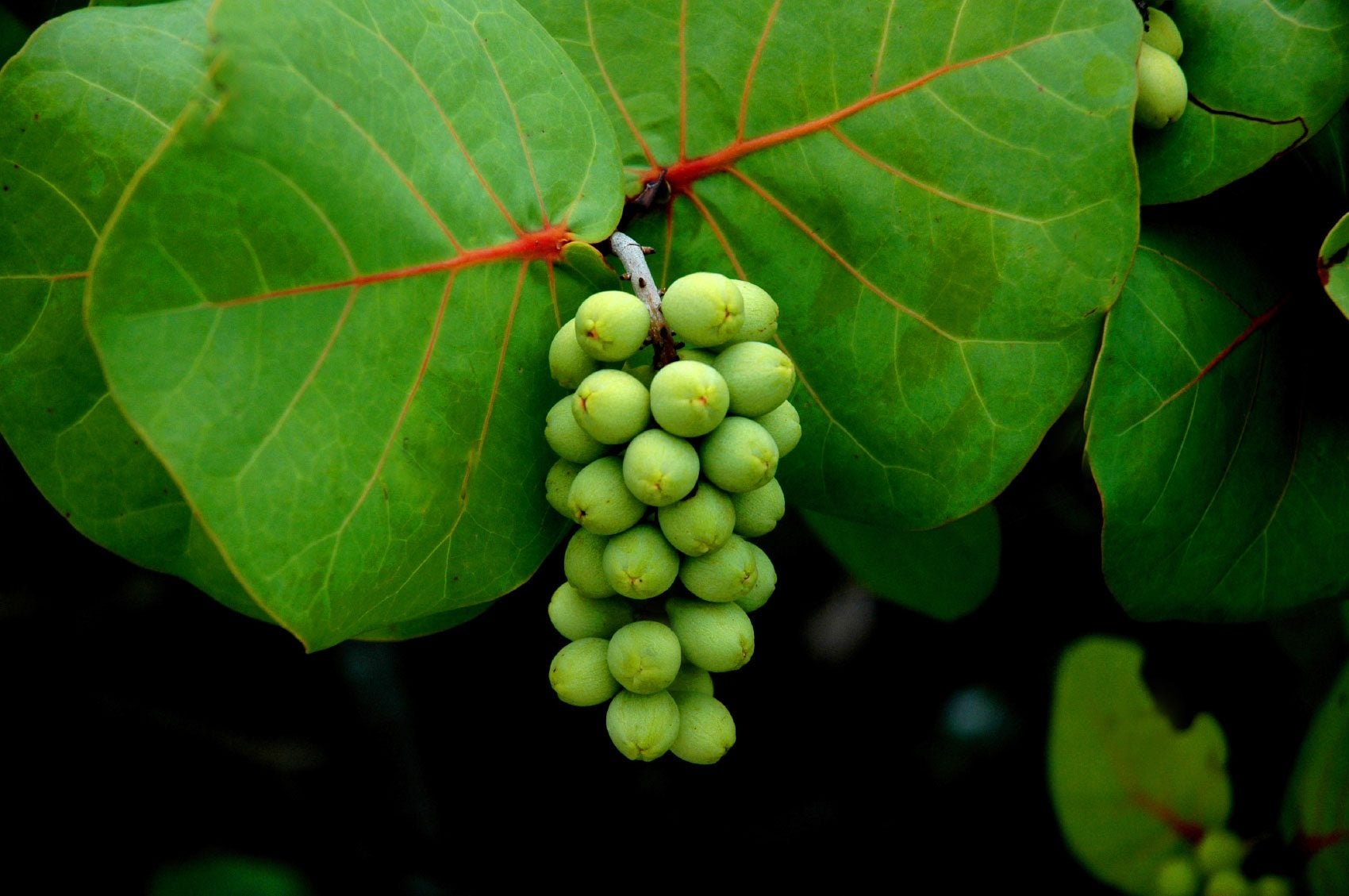Seaside Grape Information - Tips For Growing Sea Grapes

Mary Ellen Ellis

If you live along the coast and are looking for a wind-tolerant and salt-tolerant plant, look no further than the sea grape. The sea grape plant is an attractive specimen plant and shade tree, perfect for sandy soil and salty air. Given the right growing conditions, it thrives with minimal care. Read on to get some additional seaside grape information that can be useful when deciding if this plant suits your landscape.
Quick Facts about Sea Grapes:
- Botanical name: Coccoloba uvifera
- Height: 25 to 30 feet (7.6-9.1 m)
- Spread: 25 to 30 feet (7.6-9.1 m)
- Sun exposure: full sun to partial shade
- Soil requirements: sandy and well-drained
- Hardiness zones: USDA 10-11
- When to plant: spring or fall
What are Sea Grapes?
The sea grape tree is a small tropical tree whose common name comes from its fruit which resembles grapes. Native to South Florida, the Caribbean, Central America, and parts of South America, it grows naturally in sandy soils and is often used in ocean-side landscaping.
Sea grape trees grow to about 25 to 30 feet (7.6-9.1 m) in height and spread. Its natural shape is vase-like with multiple stems, but it can be trained to a single stem in a shrub-like shape. After about ten years of training the tree, sea grape care is minimal and must only be watered and occasionally pruned to maintain the desired shape. They are most often utilized to create a windbreak or hedge, although they also make attractive specimen plants. Sea grapes do well in urban environments as they tolerate urban air and pollution, and are often used as street trees along boulevards and freeways. If you’re up for the challenge, sea grapes are also a good tree for the art of bonsai.
The tree is classy with evergreen leaves that are broad and leathery, between 8 and 12 inches (20-31 cm). Young leaves have a reddish-bronze color that ages to a dark green with red veins. The plant blooms with flowers of ivory to white, which grow in clusters on short stalks. The resulting fruit also grows in clusters, green when immature and deep purple with age. The bark is also charming, smooth with a mottled gray, white, and brown pattern that peels off in sections.
What Do Seaside Grapes Taste Like?
Although not related to actual grapes, sea grapes are edible. Sea grapes are mildly sweet and a little sour. Some people describe them as tasting similar to an apple. While they can be eaten fresh, most people who harvest sea grapes use them to make jelly. They can also be made into vinegar or wine. Be careful when eating sea grapes as they have a large, hard seed you can easily break a tooth on.
There are male and female plants, so if you hope to get fruit, ensure you have one of each (a female to reproduce and a male to fertilize). Remember that the tree does create a mess from dropping fruit and debris, so select a planting site accordingly. The pollen from the blossoms has also been known to cause significant allergy symptoms.
How to Grow Sea Grapes
There are many good reasons to choose a sea grape tree for your yard and garden. It tolerates sandy soil, salty air, and briny water, so it’s a good choice for shorelines and beachside properties. However, while the sea grape plant is tolerant of salt, it will truly thrive in fertile, well-drained soil with full sun exposure. Additionally, older plants can survive temperatures of 22 degrees F (-5 C), but young plants are likely to die in the cold.
Sign up for the Gardening Know How newsletter today and receive a free copy of our e-book "How to Grow Delicious Tomatoes".
Sea Grape Propagation
Sea grapes are propagated naturally via their seed, but this method does not give you any control over the gender or other characteristics of the tree. Taking a cutting from an existing plant may obtain a more predictable result than that obtained from seeded seedlings. You can also buy a nursery tree, resulting in an enormous tree more quickly. While it is still young and growing roots, water it regularly. Regular watering will help it develop deep roots. Once established, your tree will likely not need to be watered at all.
Pruning Sea Grapes
Pruning is recommended as the tree grows but is unnecessary for the plant's health. If you want the tree to have a particular shape, begin pruning early and work on it yearly as it grows. Because of their large leaves, sea grapes require hand pruning; you cannot shear or trim them with good results.
Sea Grape Problems
There are no main diseases to cause concern, but there are two pests to watch out for concerning sea grape trees. The first pests are sea grape borers, moths that are typically found boring into small branches and twigs. The second pests are small psyllids that cause nipple gall, which produces raised red spots on the upper surface of leaves. Frequent pruning of infected branches, mulch, and additional watering is recommended for treating borers. To deal with nipple gall, try introducing beneficial insects to your garden or weekly sprays of neem oil or insecticidal soap.
All in all, sea grapes make a valuable and attractive addition to your landscape, especially in more challenging-to-manage landscapes like the coast. Use these tips, and you will have protection and scenery all year long!

Amy Grant has been gardening for 30 years and writing for 15. A professional chef and caterer, Amy's area of expertise is culinary gardening.
- Mary Ellen EllisWriter